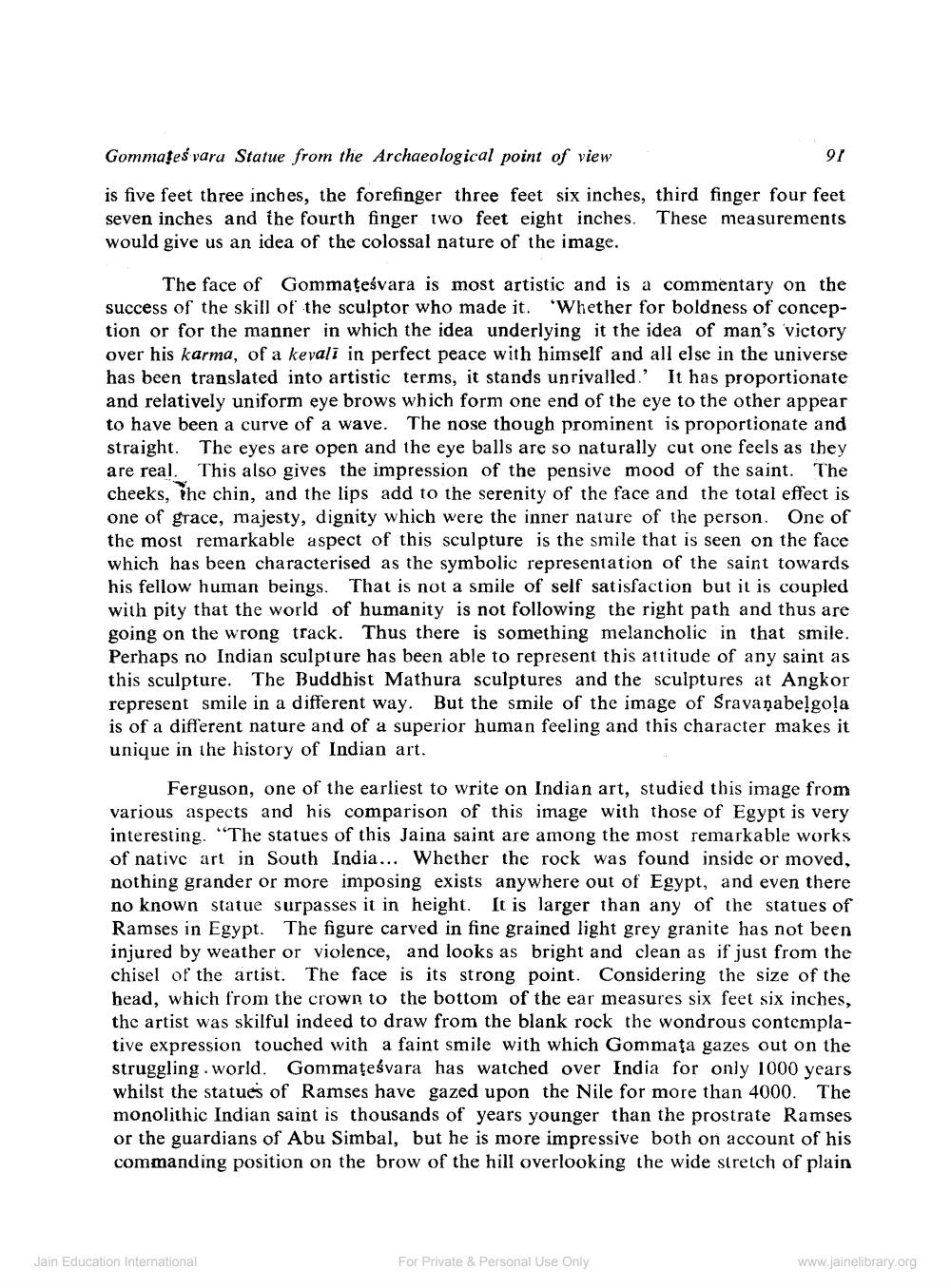________________
Gommateśvara Statue from the Archaeological point of view
91
is five feet three inches, the forefinger three feet six inches, third finger four feet seven inches and the fourth finger two feet eight inches. These measurements would give us an idea of the colossal nature of the image.
The face of Gommateśvara is most artistic and is a commentary on the success of the skill of the sculptor who made it. "Whether for boldness of conception or for the manner in which the idea underlying it the idea of man's victory over his karma, of a kevali in perfect peace with himself and all else in the universe has been translated into artistic terms, it stands unrivalled.' It has proportionate and relatively uniform eye brows which form one end of the eye to the other appear to have been a curve of a wave. The nose though prominent is proportionate and straight. The eyes are open and the eye balls are so naturally cut one feels as they are real. This also gives the impression of the pensive mood of the saint. The cheeks, the chin, and the lips add to the serenity of the face and the total effect is one of grace, majesty, dignity which were the inner nature of the person. One of the most remarkable aspect of this sculpture is the smile that is seen on the face which has been characterised as the symbolic representation of the saint towards his fellow human beings. That is not a smile of self satisfaction but it is coupled with pity that the world of humanity is not following the right path and thus are going on the wrong track. Thus there is something melancholic in that smile. Perhaps no Indian sculpture has been able to represent this attitude of any saint as this sculpture. The Buddhist Mathura sculptures and the sculptures at Angkor represent smile in a different way. But the smile of the image of Sravanabelgola is of a different nature and of a superior human feeling and this character makes it unique in the history of Indian art.
Ferguson, one of the earliest to write on Indian art, studied this image from various aspects and his comparison of this image with those of Egypt is very interesting. "The statues of this Jaina saint are among the most remarkable works of native art in South India... Whether the rock was found inside or moved, nothing grander or more imposing exists anywhere out of Egypt, and even there no known statue surpasses it in height. It is larger than any of the statues of Ramses in Egypt. The figure carved in fine grained light grey granite has not been injured by weather or violence, and looks as bright and clean as if just from the chisel of the artist. The face is its strong point. Considering the size of the head, which from the crown to the bottom of the ear measures six feet six inches, the artist was skilful indeed to draw from the blank rock the wondrous contemplative expression touched with a faint smile with which Gommaţa gazes out on the struggling .world. Gommateśvara has watched over India for only 1000 years whilst the statues of Ramses have gazed upon the Nile for more than 4000. The monolithic Indian saint is thousands of years younger than the prostrate Ramses or the guardians of Abu Simbal, but he is more impressive both on account of his commanding position on the brow of the hill overlooking the wide stretch of plain
Jain Education International
For Private & Personal Use Only
www.jainelibrary.org




